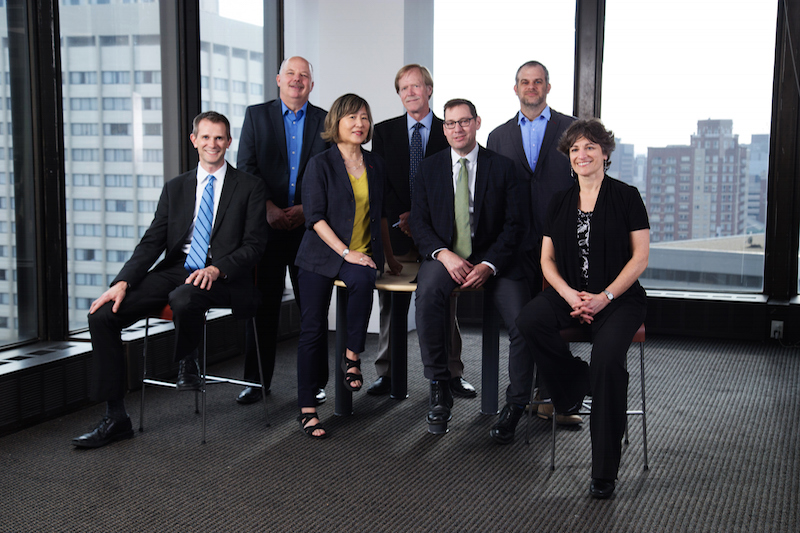The Washington, D.C. architectural and planning practice Quinn Evans Architects will expand to five office locations on May 1 when its acquisition of Baltimore-based Cho Benn Holback + Associates becomes effective.
Quinn Evans, founded in 1984, also operates from offices in Detroit and Ann Arbor, Mich.; and Madison, Wis. The new addition brings Quinn Evans’ employee count to more than 140.
The 30-person Cho Benn Holback, which was established in 1979, will remain at its current location, and operate under its name with the addition “a Quinn Evans Company.” No changes to its management or staffing are anticipated.
The two firms have portfolios in cultural, educational, civic, and urban infill projects, with an expertise in historic preservation and adaptive reuse. Cho Benn Holback + Associates has been recognized with more than 200 design awards, and is regarded for its design and revitalization work in Baltimore.
“Quinn Evans Architects is well known for its resourcefulness in urban planning and design, and that focus is what has inspired our own work through the years as well,” says Diane Cho, AIA, one of the firm’s founding partners. “We are looking to help rebuild and reinvigorate communities. Working together, we’ll have an opportunity to take our experience to other cities, and bring Quinn Evans’ perspective to our work here in Baltimore as well.”
Larry Barr, AIA, President of Quinn Evans Architects, views Cho Benn Holback + Associates as an ideal fit for Quinn Evans Architects in terms of staff, expertise, and portfolio. “I have long admired the thoughtful and creative approach reflected in their work—the caliber of design is consistently visionary and transformative. Projects like the Lillian Jones Apartments; the National Postal Museum; and Open Works, the state-of-the-art new maker space in Baltimore, are standouts.”
Both firms have completed a number of theater projects: Quinn Evans is currently designing the modernization of the 500-seat, 36-year-old Terrace Theatre at the John F. Kennedy Center for the Performing Arts in D.C., and Cho Benn Holback recently completed the $28 million renovation of Center Stage in Baltimore. (Whiting-Turner Construction was the GC on that project.)
Related Stories
| Dec 28, 2014
10 key design interventions for a healthier, happier, and more productive workplace
Numerous studies and mountains of evidence confirm what common sense has long suggested: healthy, happier workers are more productive, more likely to collaborate with colleagues, and more likely to innovate in ways that benefit the bottom line, writes Gensler's Kirsten Ritchie.
| Dec 28, 2014
7 fresh retail design strategies
Generic ‘boxes’ and indifferent service won’t cut it with today’s savvy shoppers. Retailers are seeking a technology-rich-but-handmade vibe, plus greater speed to market and adaptability.
| Dec 28, 2014
Workplace design trends: Make way for the Millennials
Driven by changing work styles, mobile technology, and the growing presence of Millennials, today’s workplaces are changing, mostly for the better. We examine the top office design trends.
| Dec 28, 2014
AIA: Commercial glass façade and door systems
When it comes to selecting fenestration systems—particularly glass facades and door systems—a number of factors come into play, requiring a thorough evaluation of a project’s individual requirements.
| Dec 28, 2014
10 essential habits of successful architects
Want to take the next step as a design processional? John Gresko, Senior Project Architect with HDR, explores the traits that many great architects possess.
| Dec 28, 2014
10 unglamorous things architects do
An acquaintance recently asked me about the kinds of things I did on a day-to-day basis at work, anticipating a response loaded with enviable activities. She was wrong, writes HDR's John Gresko.
| Dec 28, 2014
New trends in ceiling designs and materials [AIA course]
A broad array of new and improved ceiling products offers designers everything from superior acoustics and closed-loop, recycled content to eased integration with lighting systems, HVAC diffusers, fire sprinkler heads, and other overhead problems. This course describes how Building Teams are exploring ways to go beyond the treatment of ceilings as white, monolithic planes.
| Dec 27, 2014
7 ways to enhance workplace mobility
The open work environment has allowed owners to house more employees in smaller spaces, minimizing the required real estate and capital costs. But, what about all of their wireless devices?
| Dec 27, 2014
'Core-first' construction technique cuts costs, saves time on NYC high-rise project
When Plaza Construction first introduced the concept of "core first" in managing the construction of a major office building, the procedure of pouring concrete prior to erecting a steel frame had never been done in New York City.
| Dec 23, 2014
5 tech trends transforming BIM/VDC
From energy modeling on the fly to prefabrication of building systems, these advancements are potential game changers for AEC firms that are serious about building information modeling.

















